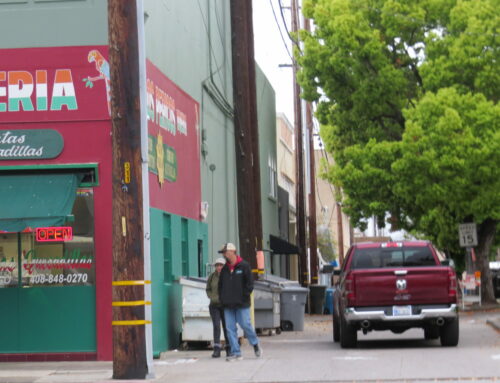Conference shows importance of helping the homeless in a region

Inspiring, raw, emotional and empowering are the words I would use to describe the featured speaker at the Annual Silicon Valley Economic Development Alliance Conference. Though the event took place in Santa Cruz with tranquil views of the beach, the topics were by no means calming. The most memorable presentation came from former Vancouver City Councilor Andrea Reimer. You might be wondering why you should care about Vancouver, which shares very little with Silicon Valley. However, a deeper dive into the demographics, housing and industry proves we have more in common than we think.
Reimer started by reviewing Vancouver facts as they stood at the beginning of her housing initiative in the beginning of her first term in 2008. The estimated population was 680,000, the minimum wage had increased 7 percent, the standard rent had increased 365 percent and in six years homelessness within the city had risen 151 percent, averaging a steady 25 percent per year. During her 10-year term on city council she spearheaded multiple projects including funding, building and maintaining various shelters, social and temporary modular housing. Research into Vancouver’s rental market identified 70,000 units, most of which were long past due dates for maintenance updates and rental pricing overviews. Exploration into these rental units led to the creation of the Vancouver Rental Database, which in turn led to 65,000 units being upgraded voluntarily. Partnering with Air BnB and imposing a 1 percent “Empty Housing Tax” on the assessed value of any vacant home led to 15 percent of those properties returning to the market. New building codes encouraging secondary dwellings added another 1,600 units of housing to the city. In light of these efforts and the addition of so many rental units back into the market, Vancouver’s Homeless Rate between 2008-2011 grew 0 percent with efforts to help 75 percent of persons living on the streets find shelter. What was it all worth if the needle didn’t move down? When you ask Reimer, she will admit she was disappointed by the numbers at first. However, 0 percent growth is a positive result especially when those efforts continue to produce results with 2009-2019 showing a minimal 4 percent increase in homelessness.
To bring it all into perspective, California’s population is 39.75 million and Canada’s population is 37.59 million; Silicon Valley has 3.1 million residents and Vancouver has 2.5 million. Comprised of the counties of Santa Clara, Santa Cruz, San Mateo and Alameda, if Silicon Valley were a city it would rank third largest behind New York and Los Angeles; If it were a state it would be ranked 31st, between Iowa and Mississippi. The Greater Vancouver area population makes it the third most populous metro area in Canada and the most populous in western Canada as cited by the World Population Review. In reference to North America, Vancouver clocks in as the fourth most densely populated city. A federally mandated survey shows Santa Clara County has experienced a 31 percent increase in homeless in the past two years.
Will we, like Vancouver, suffer at the hands of our own success? Will we take the initiative to be proactive instead of reactive? We can reduce the homeless growth rate in Silicon Valley
Brittney Sherman is the chief operating officer for the Morgan Hill Chamber of Commerce.






